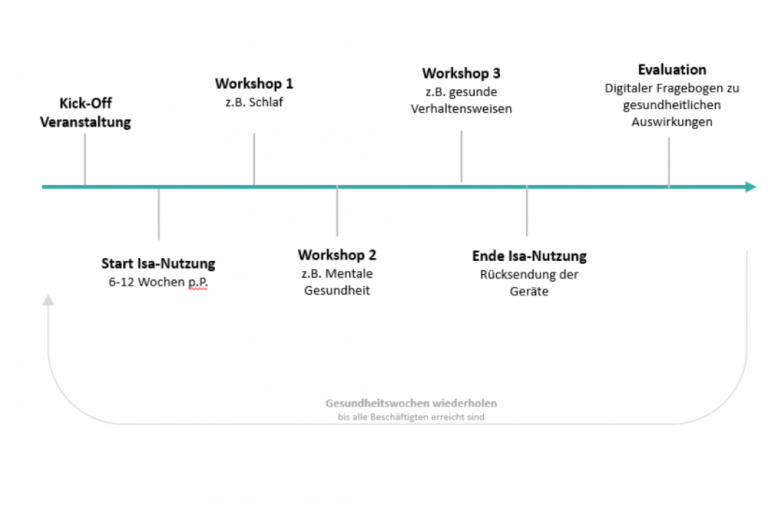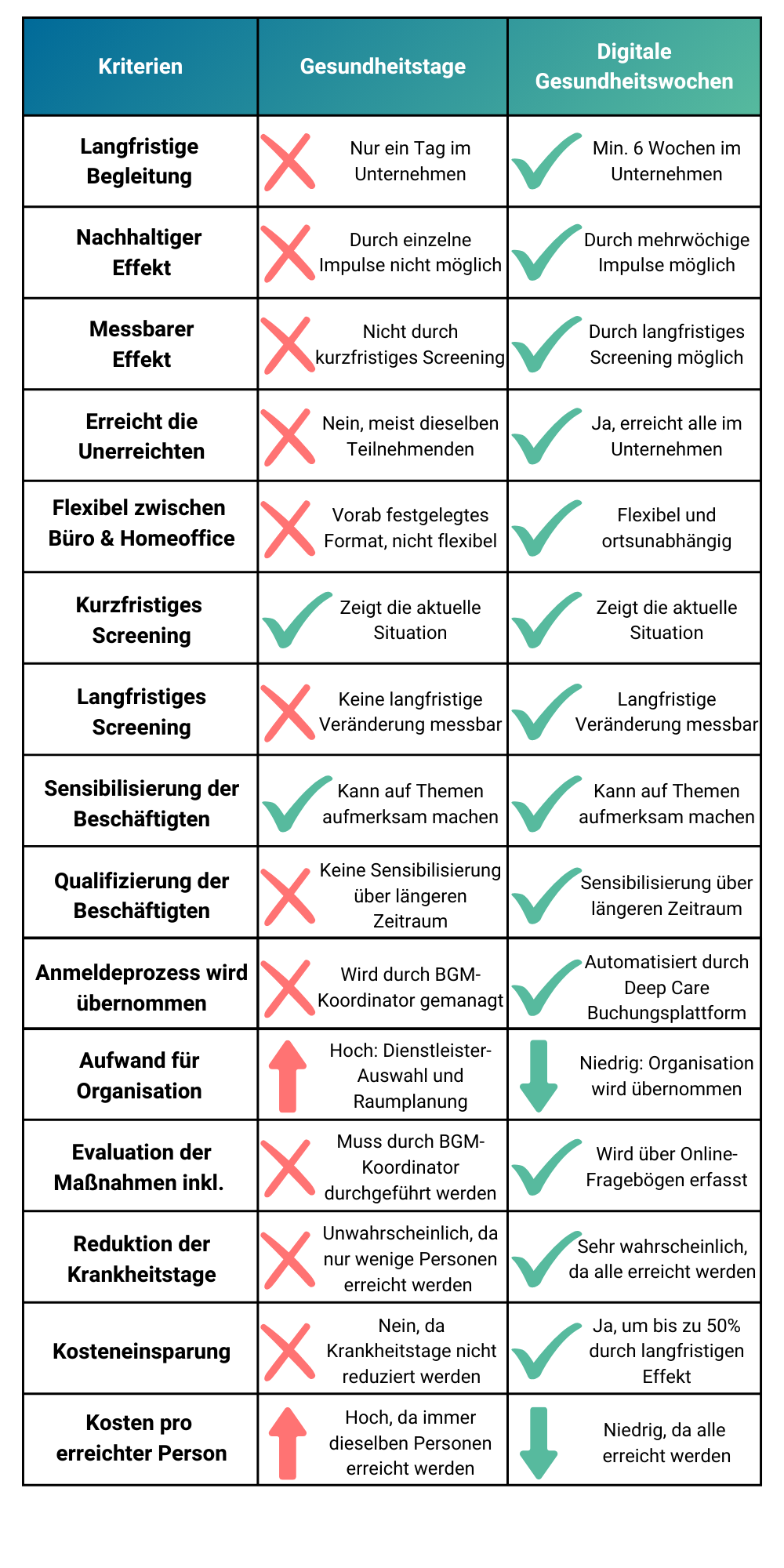
Unfortunately, the topic of health still plays a subordinate role in many companies, which is also reflected in the various studies. For example, the #whatsnext study by the IFBG shows that 8.4% of the companies surveyed do not offer any OHM measures at all. Nevertheless, 27% have a holistic OHM programme in place and the rest at least implement individual measures.

It becomes even clearer when you look at the financial resources provided by companies for WHP/BGM programmes. 49.1% of respondents stated that their annual budget is less than €10,000. 21.4% do not know the budget, 16.9% can spend up to €50,000 and the rest even more than €50,000 per year. However, considering that 54.5% of respondents to the #whatsnext study come from companies with more than 250 employees, a budget of €10,000 is not really high.
So it's no wonder that the one-off health day with workshops, lectures and tests is still a popular measure, even though the set goals are usually not achieved. Although health days are often financed by health insurance companies, which is easy on the budget, they are unfortunately rarely effective in the long term. The days are not customisable and a one-off transfer of knowledge cannot lead to a change in behaviour towards a healthier lifestyle.
Nevertheless, we would first like to clarify what a health day actually is and what advantages and disadvantages it entails.
Health days are a measure of the workplace health promotion. A day at the company is used to introduce employees to various health topics such as healthy eating, ergonomics, exercise, well-being, stress management, etc. as part of a programme. There are often presentations on specific topics, measurements are taken and various activities are organised to prevent illness. If companies do not rely on measurements, but only on presentations, this can also be provided as an online programme.
Due to the very short time span of just one day, many companies adjust their targets from year to year. Basically, the overriding objectives are information and awareness-raising. However, these can be supplemented by different objectives.
Goals can be:
At the health days, experts advise your employees on various health topics such as nutrition, exercise, ergonomics and stress. They receive important information on prevention and health through keynote speeches or workshops. The measurements also allow them to assess their own state of health.
The aim of health days is not only to inform and sensitise employees, but also to increase long-term employee loyalty. A healthy workforce is a satisfied workforce.
The advantage of keynote speeches and active workshops is that as many employees as possible can be sensitised to the topic of health in just one day. Ideally, the standardised transfer of knowledge can provide valuable tips and tricks for everyone.
Sustainability is probably the biggest problem with company health days. Although the day makes health a tangible experience, it does not bring about any real change in behaviour. It takes at least 6 weeks of continuous work to anchor a healthy habit and integrate it into everyday life.
As health days often repeat the same programmes and therefore do not result in any effective change, employees do not have to participate repeatedly. In addition, employees on holiday, working from home, in the field or with appointments cannot take part.
It is very difficult to measure the results of a health day as it is mainly about information. Body fat or fitness measurements would have to be carried out continuously in order to obtain a measurable effect.
Planning is very time-consuming for health managers, as a location, a time, the application, various providers and the realisation and implementation have to be planned in advance.
Health weeks are an effective alternative to the company health day. Due to the longer period of time, this measure brings about a change in behaviour and leads to a healthier lifestyle.
Health weeks are also workplace health promotion measures. The big difference to individual health days is their long-term nature. This means that the effectiveness of the measure can actually be evaluated. Health weeks can be organised in different ways:
The objectives of the Health Weeks are largely comparable with the objectives of the Health Day. However, there is a significant difference in the main objectives. The focus is not on information, but on changing behaviour and reducing the number of sick days. Nevertheless, information and sensitisation are also covered.
Goals can be:
Our health coach Isa enriches everyday office life with practical guidance on more movement and ergonomics. Isa uses data protection-compliant sensor technology to recognise sitting postures and provides direct live feedback and individual guidance on how to move more, be more ergonomic and drink more. According to behavioural psychology, sustainable behavioural change is only possible through a stimulus over a longer period of time, which is why Isa is placed on a person's desk for at least 6 weeks. During this time, routines can be changed and health can be improved.

It is known from behavioural psychology that a habit only develops after at least 6 weeks. This is why the positive effect on health is greater if the measure is implemented over the long term.
The period and location of digital health weeks can be chosen independently by employees. This ensures that all employees are included.
The effect of the measure can be proven by continuous anonymised measurements over a longer period of time and simple online surveys.
In contrast to sports courses that take place after work or health days that cannot take place at the desk, health weeks with Isa work directly at the desk and during working hours. Subliminal cues improve health throughout the working day.
During the digital health weeks, employees must actively participate. Listening to a lecture is not enough. That's why initiative and consistency are required.
For similar health weeks, for example at a health resort, employees must be released from work.
